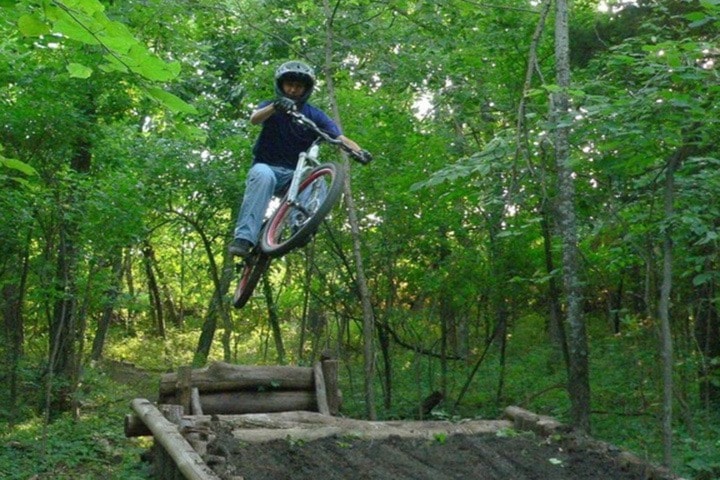The pedal underneath your foot is not only a means of propulsion, it's an economic driver as well.
At least it is according to a Destination British Columbia study called Mountain Biking in Rossland and Golden, looking at the economic significance of the sport.
Through a survey in late summer 2011 derived from mountain bike visitors to the city, incremental spending was studied to produce visitor spending profiles.
The study was meant to follow the money, to see how big of an impact the sport had on the city's economy—and was not inclusive of the economic impact of the residents who were also involved in the sport.
The study found that mountain bike visitors to Rossland spent a total of $589,000, even though the data was gathered during the “worst possible year ever,” said Tourism Rossland (TR) executive director Deanne Steven, who helped gather the Rossland information for the study.
“Most people come to do the Seven Summits (trail) and that year it was open late and people did not come. They had to shovel it open at one point,” she said, noting the trail finally opened in mid August.
Even so, the sport of mountain biking was shown to be a major economic driver in the city. Steven said TR has been marketing the local network of trails for years at numerous outdoor shows across the continent, an effort made easier because the city is such a leader in the industry.
The region benefits from several factors to position it atop the industry in North America, one of which is trail development. All trails in the area are “legal, authorized and labelled” and they have a full time paid trails crew to maintain them.
“That’s unheard of in this province,” Steven said about the Kootenay Columbia Trails Society.
And with adequate liability insurance in place Steven has been able to effectively market the area to mountain bike enthusiasts. She sends out over 30 detailed maps of the area each week to potential visitors, and that has translated into dollars for the Rossland economy as people come to explore, ride and shop.
Out of the total economic impact, the largest share of expenditure was made by consumers on services related to mountain biking activities, such as accommodation, food, and transportation, stated the study.
Those Rossland visitors who stayed in hotels or motels were assumed to account for 9.1 per cent of visitors, while it was assumed the remaining 90.9 per cent stayed in other types of accommodation (hostels, campgrounds, bed and breakfasts, etc.).
It was also assumed that 40 per cent of shopping expenditure related to mountain biking was attributed to mountain bike repairs, equipment, tools and bike parts, and the remaining 60 per cent to rentals.
In the case of all other shopping in Rossland, 45 per cent of spending was allocated to clothing, and the remaining 55 per cent on other goods.
Direct purchases from industries that produce these goods and services were an estimated $362,000, with another $155,000 resulting from activities in other supplier industries.
All revenue associated with spending by visitors participating in mountain biking activities in Rossland was generated in the supplier industries, with $219,000 in direct supplier industries, and a further $71,000 in impacts further back in the supply chain.
While there was no direct employment, an estimated four jobs in supplier industries were supported by visitors, and one job was generated in indirect supplier industries. Together with induced employment, a total of six jobs were supported by these activities.
The study also recognized the significance of output revenue, or taxes going out into the larger economy on items such as transportation or food and beverages.
“As a result, the tax impact associated with direct expenditures is quite high,” the study read. “Federal, provincial, and local tax revenue impacts (including commodity and income taxes) are estimated at $163,000.”
Among direct supplier industries, accommodation and food services suppliers benefit the most, with sales to visitors estimated at $171,000.
Other key industries include retail trade ($49,000), finance, insurance and real estate ($45,000), manufacturing ($28,000), and other services excluding public administration ($19,000).
Funded through the Resort Municipality Initiative, the study used the BC Input-Output Model (BCIOM) model, which determines the total economic impact an activity has on the B.C. economy.
Mountain bike visitors to Rossland were divided into three groups according to their trail use (Seven Summits trail only, Seven Summits and other trails or other trails only).
When combined, mountain bike visitors to Rossland spent a total of $589,000 and their spending had the following associated impacts on the province:
• total output (revenue) of $362,000;
• gross domestic product of $290,000 in all supplier industries;
• commodity taxes (HST, GST, fuel and other taxes) of $122,000 paid directly (or embedded in the cost of goods purchases) by mountain bike visitors
• taxes paid by supplier industries of $35,000.
The study showed that Golden has a stronger mountain biking industry than Rossland, who recorded a total of $930,000 spent by visiting mountain bikers.
The information collected from the sample of mountain bike visitors who were interviewed was factored up to represent all mountain bike visitors to Rossland during the study period.
editor@rosslandnews.com
